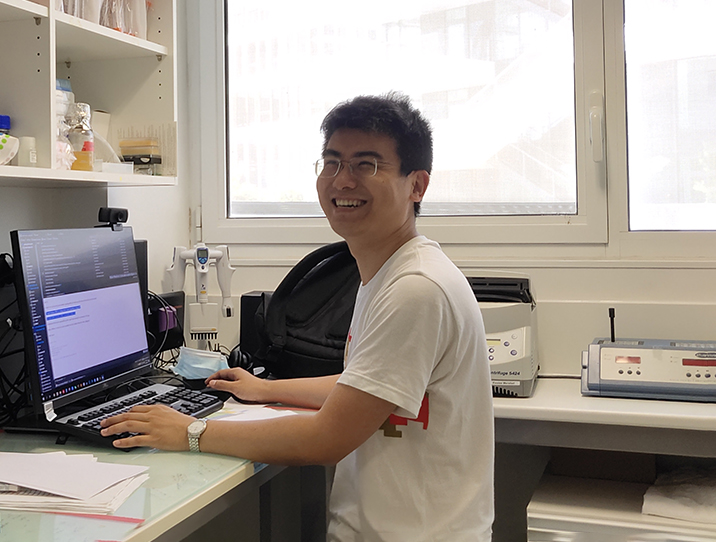Thesis defense: Yunlong Jia
| When |
Jul 06, 2021
from 02:00 to 05:00 |
|---|---|
| Where | Room D8-001 at ENS de Lyon |
| Contact Name | Yunlong Jia |
| Attendees |
Jury members: Mme Christine BRUN DR AMU Rapporteure; M. René REZSOHAZY Professeur UCLouvain Rapporteur; Mme Corinne MAUREL-ZAFFRAN MCF AMU Examinatrice; M. Samir MERABET DR IGFL Examinateur; Mme Françoise BLEICHER-BARDELETTI Professeure UCBL Directrice de thèse. |
| Add event to calendar |
|

On july 6th,Yunlong Jia of the team of Samir Merabet will support his thesis entitled:
"Parallel Evolution of BiFC for Probing Protein–Protein Interactions in Living Cells"
Abstract:
Proteins are crucial for most cellular functions and typically participate in biological processes in concert with other proteins. Hence, identification of key protein players and characterization of protein-protein interactions (PPIs) are highly important. Owing to substantial advances in current biotechnology, a wide range of methods has been developed to dissect the PPI landscape. Given their popularity and power, the bimolecular fluorescence complementation (BiFC) assay, based on the reconstitution of a fluorescent protein in vivo, has emerged as the most popular protein-fragment complementation method in cellular biology over the past years.
My team has previously established BiFC for probing different binary protein interactions in live Drosophila. During my PhD work, I expanded the utility of the BiFC in mammalian live cells. In particular, I standardized the protocol of the BiFC analysis to investigate protein binding affinities, in an applicable and simple manner. This quantitative BiFC approach was used in a systematic analysis of HOX/PBX/MEIS interaction properties in live cells and revealed novel interaction interfaces in several human HOX proteins.
Furthermore, I applied the BiFC from low to high throughput PPI detection. Pairing sequenceverified human ORF collections with next generation sequencing, I participated in the conception of a powerful tool for performing a large-scale BiFC interaction screen in live cells. Benefited chiefly from this approach, a synoptic view of comprehensive HOX interactomes was substantially contributed to the current limited knowledge on human HOX protein partners and provided a novel tool in the cell biology arsenal.
Along with the contemporary development of proximity labeling methods, in my side project, I depicted and tested a new cell-based PPI detection approach, which combines BiFC and BioID (proximity-dependent biotinylation identification) technologies, and allows deciphering the endogenous interactome of a protein complex.
In summary, my PhD work demonstrates that the BiFC is a versatile and powerful approach to study PPIs in the live cellular context, on either small or large scale. In addition, my work further enlarged the potential of BiFC applications by combining it with other tools.
The defense will be in english.


